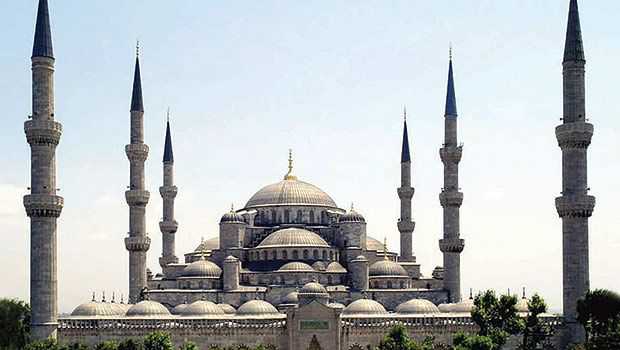By RIMA AL-MUKHTAR, [email protected]
Published: Jun 8, 2011 14:26 Updated: Jun 8, 2011 14:26
Istanbul is Turkey’s cultural and financial center and its most populous city. Today, Istanbul is the largest city in Europe with a population of at least 12 million. In 2010, it was one of three European Capitals of Culture.

Istanbul is located in northwestern Turkey within the Marmara Region. The Bosphorus, which connects the Sea of Marmara to the Black Sea, divides the city into a European side and an Asian, Anatolian side. The city is further divided by the Golden Horn, a natural harbor bounding the peninsula where the former Byzantium and Constantinople were founded. This body of water separates the “old” and “new” parts of European Istanbul. The word “golden” comes from an urban myth that claims there was an Ottoman group of ships filled with gold and jewelry that sank in the sea and have not yet been found. The word “horn” suits the body of water as it is shaped like a horn.
Like Rome, Istanbul has also been called “The City of Seven Hills” because the oldest part of the city is supposedly built on seven hills, each of which bears a historic mosque. During its long history, Istanbul has served as the capital of the Roman Empire, Eastern Roman (Byzantine) Empire, the Latin Empire and the Ottoman Empire—all of which have added different flavors to this city, which is reflected in its architecture and heritage.
The religion with the largest community of followers is Islam, however, religious minorities also include Christians and Jews. There are more than 2,200 active mosques, 123 active churches and 26 active synagogues.
Istanbul is also called “The City of Minarets” for having a huge number of mosques, which carry at least four minarets each. One of the oldest and biggest mosques in Istanbul is Sultan Ahmed, also known as the Blue Mosque for the blue tiles that decorate the walls of its interior. The Blue mosque, which has six minarets, was built between 1609 and 1616, and like any other mosque at that time, it was used as an Islamic school and a mosque for praying.
The Grand Bazaar is one of the largest and oldest covered markets in the world, with more than 4,400 shops in 64 streets and 22 gates and attracts between 250,000 and half a million visitors on a daily basis. Shops there offer local products from clothing, accessories, lanterns, leather goods, home accessories, pottery, spice, silk carpets and jewelry. The Grand Bazaar looks like a labyrinth at first sight, but it’s not. There is the Jewelry Street, Carpet Street and so on.
“The covered Bazaar is definitely one of the must-sees of Istanbul,” said Abdulkader, a Turkish tourist guide. “When you’re walking on the streets in the Bazaar, some shopkeepers might approach you and invite you to see their collections and goods. When you walk into their shop, you will be offered coffee, tea or a soft drink without any commitment of buying anything. The shopkeepers will welcome you with a warm smile.”
Sultan Mehmed the Conqueror constructed the Bazaar between 1455 and 1461. The Bazaar was greatly enlarged in the 16th century during the supremacy of Sultan Suleiman the Magnificent. And, in 1894, it underwent a major restoration following an earthquake.
Istanbul is known for its history and culture that goes back to approximately 400 years. One of the significant palaces in Istanbul is the Topkapi Palace, which is Turkish for Cannon Gate Palace. This was the official and primary residence in the city of the Ottoman Sultans. Topkapi Palace is among those monuments belonging to the “Historic Areas of Istanbul,” which became a UNESCO World Heritage Site in 1985.
The palace was a place for royal occasions and for entertainment events and is a major tourist attraction today. Today, it is a museum that contains the most holy relics of the Muslim world, such as the Prophet Muhammed’s cloak and sword. It also contains large collections of chinaware, weapons, shields, armor, Ottoman miniatures, Islamic calligraphic manuscripts and murals, as well as a display of Ottoman treasure and jewelry.
Along the wall there are three main gates: Gate Otluk, Demir Gate and the Imperial Gate (Bab-i Humayun), among several smaller gates. The palace has four enormous courtyards and they all lead to each other. During the Ottoman Empire, each became steadily more exclusive, leading to the Fourth Courtyard, which was the sultan’s private courtyard.
Another significant culture has been developed around what is known as a “Hamam,” the Turkish word for a Turkish bath. This culture, which started during the Ottoman period, is a method of cleansing the body and of relaxation. It is a method of cleansing the body and relaxation.
“First, you are taken to a room known as the warm room to relax there,” explained Abdulkader. “The room is heated by a continuous flow of hot, dry air allowing you to perspire freely and is exactly like the sauna. Then, you are moved to the hot room where you are exfoliated using special soap and a loofah. You will then be splashed with cold water for the final cleaning before getting dressed in a special cloth. After this one-hour process, you will receive a full body massage and be relaxed in a cooling-room.”
via Istanbul: The city of minarets – Arab News.

Leave a Reply